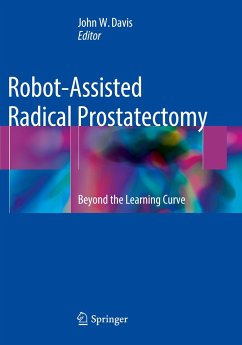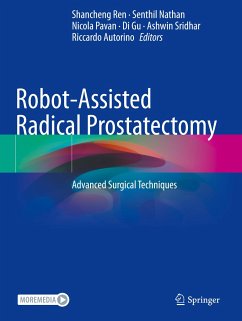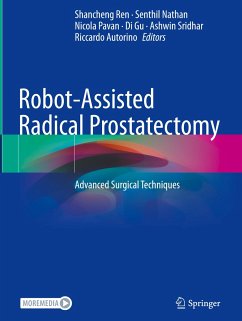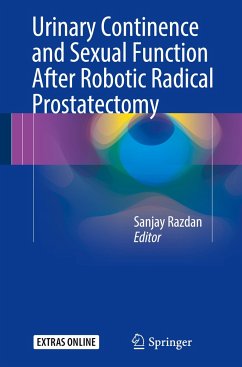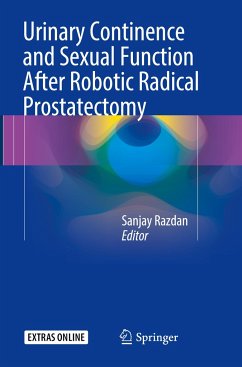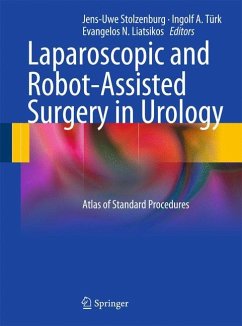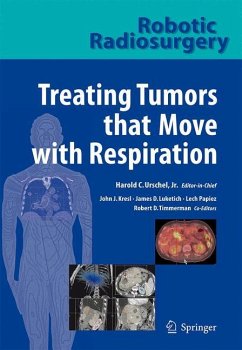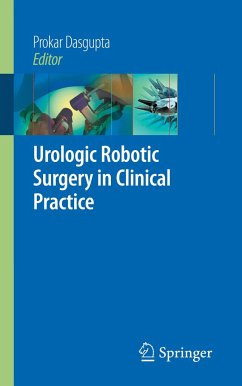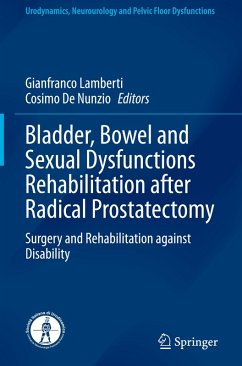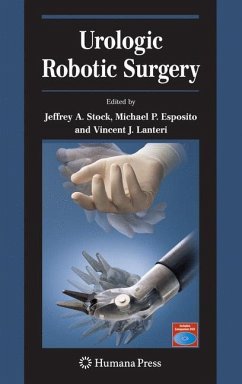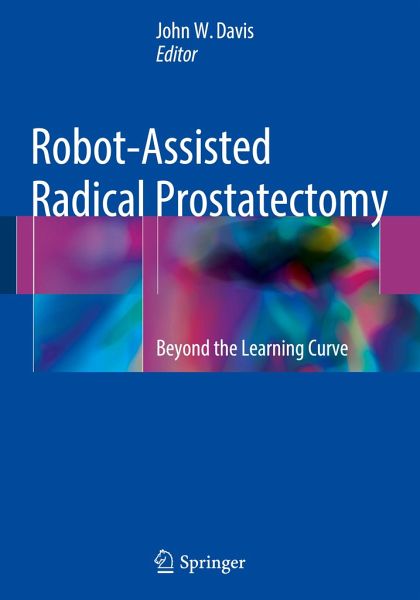
Robot-Assisted Radical Prostatectomy
Beyond the Learning Curve
Herausgegeben: Davis, John W.

PAYBACK Punkte
49 °P sammeln!
This book addresses knowledge gaps in RARP in 3 key sections: 1) Step-by-step approach including multiple technique options and innovations, 2) Patient selection, safety, outcomes, and 3) Preparing the patient for surgery. The order is more based upon knowledge priority rather than a chronologic sequence in which part 3 would go first. Part two allows more summary and commentary on evidence and part three allows some creative content that is otherwise hard to find in one place-medical evaluations, imaging, clinical trials, patient education, etc. This textbook emphasizes content for the advanc...
This book addresses knowledge gaps in RARP in 3 key sections: 1) Step-by-step approach including multiple technique options and innovations, 2) Patient selection, safety, outcomes, and 3) Preparing the patient for surgery. The order is more based upon knowledge priority rather than a chronologic sequence in which part 3 would go first. Part two allows more summary and commentary on evidence and part three allows some creative content that is otherwise hard to find in one place-medical evaluations, imaging, clinical trials, patient education, etc. This textbook emphasizes content for the advanced skills surgeon in that multiple techniques are presented as well as state of the art evidence. The learning curve is addressed and the authors clarify how this text is useful for learners. The caveat is that they should be careful in patient selection and stick with what their mentors are showing them. With experience, they can then branch out into the many techniques presented here. Robot-Assisted Radical Prostatectomy: Beyond the Learning Curve will also have cross-over appeal for surgical assistants, physician assistants, nurses, and anyone else involved in the surgical care of prostate cancer.



